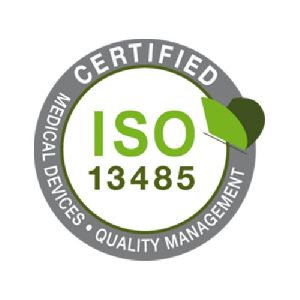ISO 13485:2016 is indeed an important international standard for ensuring the quality management of medical devices. Here’s a more detailed overview of what this standard entails:
Purpose: ISO 13485:2016 is designed to assist organizations in the medical device industry in establishing and maintaining a comprehensive Quality Management System (QMS). The primary goal is to ensure that medical devices consistently meet customer and regulatory requirements while maintaining the highest standards of safety and efficacy.
Scope: This standard covers the entire lifecycle of medical devices, from design and development to production, installation, servicing, and disposal. It applies to organizations involved in the production of medical devices, including manufacturers, suppliers, and service providers.
Regulatory Compliance: ISO 13485:2016 helps organizations meet the regulatory requirements of various countries and regions. Compliance with this standard can simplify the process of obtaining regulatory approvals and certifications, such as CE marking in Europe or FDA clearance in the United States.
Risk Management: The standard places a strong emphasis on risk management throughout the product lifecycle. It requires organizations to identify and mitigate risks associated with their medical devices, ensuring that potential hazards are minimized.
Documented Processes: ISO 13485:2016 necessitates the establishment of documented processes and procedures for various aspects of the business, including design and development, production, quality control, and post-market surveillance. These processes should be consistently followed and regularly reviewed and improved.
Customer Satisfaction: Ensuring customer satisfaction is a core component of ISO 13485:2016. Organizations are required to monitor and measure customer feedback and use it to improve their products and services continually.
Continuous Improvement: The standard promotes a culture of continuous improvement. Organizations are expected to monitor and measure their QMS performance and make necessary adjustments to enhance effectiveness continually.
Auditing and Certification: To achieve ISO 13485 certification, an organization undergoes a formal audit by an accredited certification body. If the organization demonstrates compliance with the standard’s requirements, it receives certification, which is typically valid for a specified period, subject to surveillance audits.
Global Acceptance: ISO 13485:2016 is recognized and accepted globally, making it easier for organizations to trade their medical devices internationally and access a broader market.
Patient Safety: One of the most critical aspects of ISO 13485:2016 is its commitment to patient safety. By implementing this standard, organizations demonstrate their dedication to producing safe and effective medical devices that benefit patients and healthcare professionals.
In summary, ISO 13485:2016 is a vital standard for organizations in the medical device industry, as it ensures the quality, safety, and regulatory compliance of their products and processes. Achieving and maintaining certification can enhance an organization’s reputation, facilitate market access, and, most importantly, contribute to the well-being of patients and the effectiveness of healthcare systems worldwide.